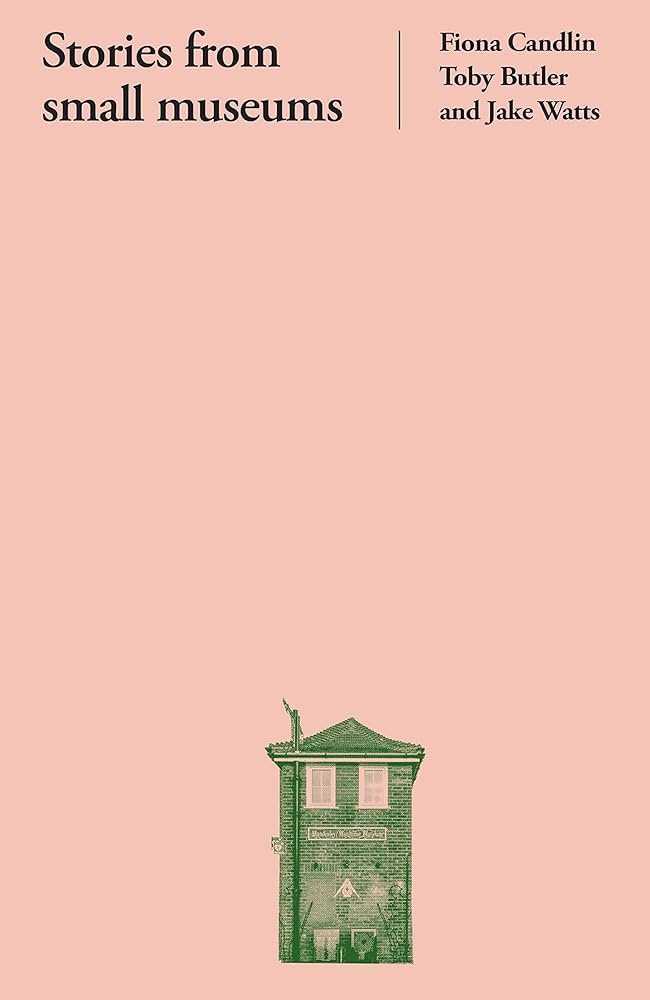In Stories from Small Museums (2022), Fiona Candlin, Toby Butler, and Jake Watts use oral histories to chronicle small museums in the United Kingdom. This book developed from their project called “Mapping Museums: The History and Geography of the UK Independent Sector 1960–2020,” for which they were awarded an Arts and Humanities Research Council grant. Conclusively, their project found that by 2017, “half of all museums in the UK were both small and independent,” making up the “biggest single group of museums in the UK” (6).

To conduct this investigation, Fiona Candlin, Toby Butler, and Jake Watts primarily interviewed museum founders, as well as some museum employees. Though the body of their work is equally fascinating, I wanted to spend a moment working through their introduction, as their project raised similar concerns to ours in its exploration of museums. I was intrigued by the way in which the researchers struggled to develop a cohesive definition of the museum: What distinguishes between a museum, gallery, or archive? How might excluding non-traditional museums consequentially exclude museum founders with non-traditional professional paths, or commonly, those founders who were non-white or non-male? Their finalized definition of a museum stated that museums must “have a collection, care for objects in the long term, and that at least some of those objects would be on display;” they must exist in a physical space while serving the public (8). While this definition was created partly to limit the scope of the project, it also hoped to walk a fine line between limitation and inclusion —- excluding online spaces, while still welcoming remote, potentially inaccessible small museums (8-9).
As aforementioned, Candlin, Butler, and Watts encountered the complicated issue of how to combat a lack of diversity amongst museum founders —- primarily older, white, male founders within the UK. They recognize the brambly aspect of this issue: Is it better to include the array of people that is most readily available to accurately reflect the public field (while excluding social minority voices), or is it better to actively seek out less publicized museum founders with minority identities (thus altering the perception of who is most public within the field)? The researchers drew from the work of Kate Hill, who studied gender in nineteenth and early twentieth-century museums, whose understanding of ‘museum-makers’ was intentionally inclusive; rather than solely founders, she defined museum-makers as secretaries, educators, researchers, and more, within the museum (21). They adopted Hill’s approach, opting to include other museum employees, outside of the label of “founder,” in doing so, hopefully including a broader spectrum of identities, careers, and perspectives. I think, rightfully so, that they recognized that those who are most public are not always those who are doing the toughest forms of labor.
Moving past these initial queries, Candlin, Butler, and Watts lay out the four chapters of their book: “Transport museums: Loving objects and each other,” “War and conflict museums: Muttering in the corridors of power,” “Local history museums: At the center of the universe,” and “The museum founders: Getting on the footplate.” I found oral history to be most effective as a methodology in the moments that it revealed deep emotion or personal connection in relation to an otherwise seemingly sterile, often mechanical museum setting. Two pertinent examples are drawn from the transport and war museum chapters. In interviewing individuals connected to these museums, the researchers framed the museums almost as characters within people’s lives —- they were institutions around which volunteers built their relationships and through which they processed hardship.
Volunteers at the Vintage Bus Museum in Dinting described the emotional fulfillment they received from bus restoration; volunteer Jasper explains that “I suppose it’s an unspoken rule that you don’t just say, ‘Oh what happened to your divorce?’ or something. You don’t have to talk too much. You can have a banter” (58). He goes on to explain that the museum functions as a reinforcement of the volunteers’ self-worth. Similarly, in the war-focused Metheringham site, veteran Andy praises the therapeutic action of being inside of the planes, as a way to “assuage the ghosts…It’s walking —- time walking again, where they’ve been, is what it is” (71). Here, oral history highlights what the researchers’ museum surveys could not — the healing power of museums, especially in smaller museums whose institutional power is often weaker, but whose emotional power is deeply compelling.

In moving forward towards our institutional history, I hope to be thinking about many of the questions that Stories from Small Museums pressed forward in my mind: How do we define the spaces we are studying? How can we most accurately represent the actors that exist within them? How might we highlight emotions that have been obscured by the artifice of the institution?
Butler, Toby, Candlin Fiona, and Jake Watts. Stories from Small Museums. Manchester, England: Manchester University Press, 2022.
Be First to Comment